Never before in history has science played such a major role in combating a pandemic as during the COVID-19 crisis. And with the large amounts of data available on numbers of people infected and numbers of people killed, the rapidly available genetic code of the virus and numerous digital techniques, mathematicians and computer scientists were given an important task.
During more than a year and a half of the coronacrisis, CWI researchers worked on epidemiological models, apps for contact tracing, statistical methods for drug trials and vaccination strategy. They also contributed to the committee Digitale Ondersteuning Bestrijding Covid-19 and tried to improve the national corona policy.
In this longread we look back with CWI-researcher Peter Boncz on how CWI helped fight the corona crisis.
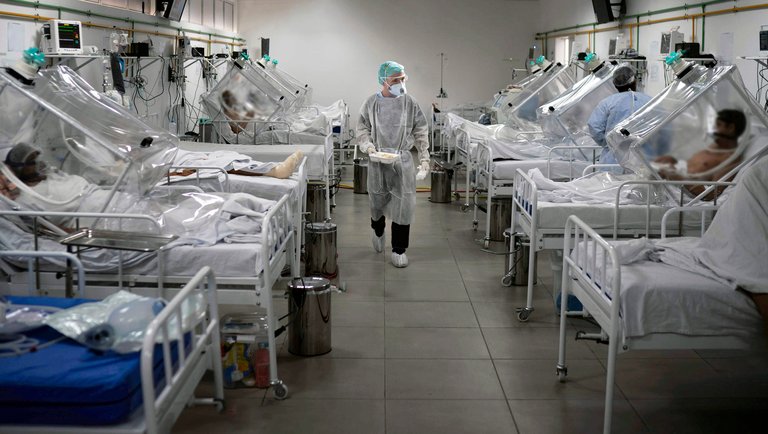
In the first weeks of March 2020, CWI researchers Peter Boncz, Bert Zwart and Peter Grünwald started to regularly discuss how they could use their expertise in mathematics and computer science in the fight against the corona crisis. The coronavirus had long reached the Netherlands, the country had just mourned its first corona death, but the measures were very limited and localised.
“In February 2020, we were already concerned about the exponential growth in the number of corona infections and the lack of far-reaching measures,” Boncz looks back in August 2021 at the start of the pandemic in the Netherlands. “In March, we felt we had to try everything to wake up the government and the National Institute for Public Health and the Environment, RIVM. We wanted to use our expertise to improve policy.”
COVID team
On the initiative of Boncz, Grünwald and Zwart, a CWI COVID team was set up in April 2020 consisting of about ten researchers who started working on different aspects of the corona crisis: epidemiological models and the uncertainties in them, apps for contact tracing, privacy and security of such apps, new statistical methods for combining different drug trials, and using CT scans for COVID diagnosis. Over time and as the impact of the pandemic changed, other aspects were added, such as the logistics of vaccinations and analysing the social and psychological consequences of the corona crisis.
But it did not stop at research alone. For example, Boncz took a seat in the committee Digitale Ondersteuning Bestrijding Covid-19 (‘Digital Support Fighting Covid-19’). One of its main activities is to oversee the development and roll-out of the Dutch CoronaMelder app. In the past year, the committee issued some 20 recommendations. Together with other researchers in the Netherlands, Boncz is also making a case for more attention to ventilation to limit the spread of the coronavirus. In early July 2021 they wrote a letter to the government to take measures against the spread of the coronavirus through the air.
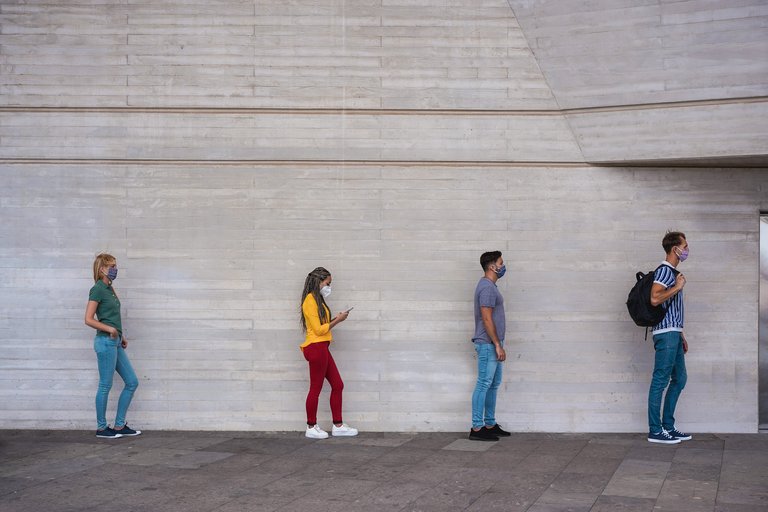
With Peter Boncz, we look back on how CWI researchers have helped to combat the corona crisis in the past year and a half.
What effect did your first action in March 2020 have?
“We approached the RIVM, mainly to see if we could help determine margins of uncertainty in the predictions of the number of corona infections. After a while, an online discussion group was formed with people from the RIVM and with researchers from outside RIVM, including Bert Zwart, Peter Grünwald and me from CWI. How much influence CWI subsequently had on the RIVM’s work is unclear, because the RIVM was formally in charge and went its own way. But I do have the impression that the attention we asked for the margins of uncertainty in the epidemiological models has borne fruit. In the beginning, the RIVM showed graphs without margins of uncertainty. After a while they did indicate uncertainty margins and you saw a range of possible epidemiological scenarios.”
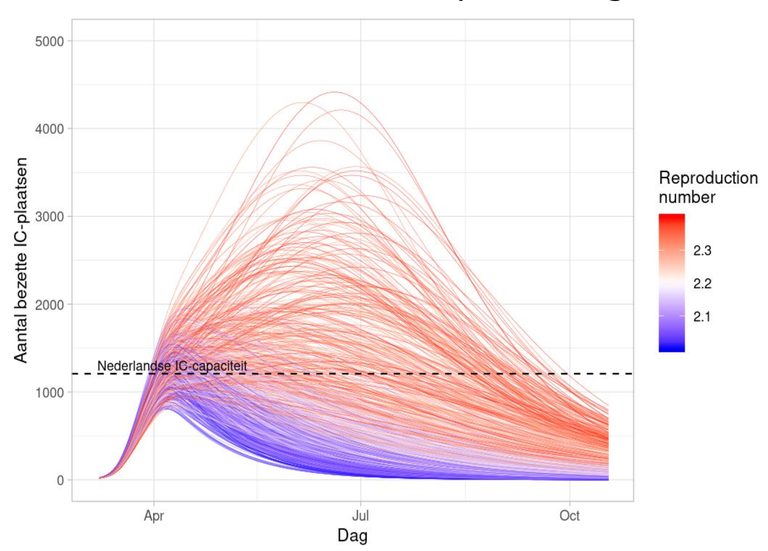
Why are these uncertainty margins so important?
“Especially for the timing of the lockdown measures, it is important to know what uncertainties there are in the models. Intervening a little too late, as I think we did in the Netherlands during the first wave, leads to a significant number of additional infections and deaths.”
What expertise does CWI have that the RIVM does not have when it comes to determining margins of uncertainty in epidemiological models?
“Bert Zwart and Daan Crommelin have ways of calculating those uncertainties in an analytical way, instead of with MonteCarlo simulations, as the RIVM does. This can improve the calculation of uncertainties in complex models. In the middle of last year, Zwart and Crommelin already published scientifically about their research.”
Did the discussions in the online discussion group have any concrete results outside the RIVM?
“Eventually, those discussions received a formal follow-up in a large ZonMW project on corona control, lasting one and a half years. Daan Crommelin’s work took place within that context. In addition, I myself, in consultation with epidemiologists, created a model of the effectiveness of the CoronaMelder app in slowing down the pandemic.”
And how effective has the CoronaMelder app been?
“In the Netherlands, only about 16% of people used the app. That’s too low to have a significant impact on fighting the pandemic. Effectiveness is quadratic in the fraction of users, so only 3% of contacts are picked up by the app, namely 16% of 16%. According to my model, it did save a few hundred lives, but since more than 30 thousand people have already died, that’s not much. In England, the acceptance of their app was much higher and their app was more successful. Even now I would ask people to install CoronaMelder.”
Besides modelling the pandemic, has CWI also contributed to finding treatments against COVID-19?
“Yes indeed. Peter Grünwald and Judith ter Schure have developed a new type of statistical method that makes it possible to combine data from drug trials that have been carried out in different places in the world into one large trial. This makes it possible to more quickly conclude whether a certain treatment works or not. The new method was used to determine whether the existing BCG vaccine against tuberculosis also works against COVID-19. That project did not lead to a spectacular recommendation early in the pandemic. But the researchers involved did have a live picture during the pandemic of the evidence for the BCG vaccine so far. This prevented hasty decisions. The usefulness of the new statistical method also remains intact, as never before have interim results from clinical trials been aggregated in such a robust way. Grünwald and Ter Schure hope that in the future the method can contribute to evidence-based medicine in keeping medical guidelines up-to-date with new clinical research."
You are also a member of the supervisory committee Digitale Ondersteuning Bestrijding Covid-19 that advises the Ministry of Health, Welfare and Sport. What role does this committee play?
“Digital tools such as an app that monitors whether you have been close to an infected person for more than 15 minutes can help fight the pandemic. But at the same time we don’t want such an app to violate privacy. The app must also be easily accessible and information must be safe, for example by not storing data centrally. Last year I came into contact with the DP3T project at the Swiss universities ETH Zürich and EPFL in Lausanne, which subsequently led to the Exposure Notification system integrated in Android phones and in iPhones.
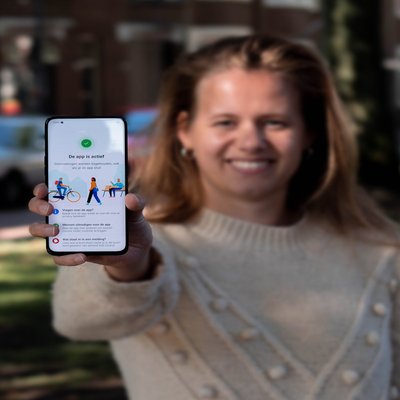
“The committee has looked at whether the CoronaMelder app developed last year meets the important preconditions on privacy and security. The committee includes some fifteen people with very different expertise: people with knowledge of virology and epidemiology, but also computer scientists, lawyers and representatives of civil society organisations of elderly and disabled people. As long as the pandemic continues and the apps are used, this committee will continue to exist and monitor.”
[The interview with Peter Boncz continues below the box]
Professor Carl Moons (UMCU) on the added value of CWI research in combating the corona pandemic:
“The analysis and modelling of available data is crucial in the fight against the corona pandemic. If there is one thing I have learned in the past year and a half, it is that it is essential to look at that data from many different angles and fields of expertise. CWI researchers have different expertise and look at data and model predictions from a different angle than epidemiologists, doctors or virologists, for example.
“CWI researcher and member of our committee Digital Support Fighting Covid-19, Peter Boncz, was on top of the available data and models, and was always up-to-date. He modelled and recalculated the available data from the corona dashboard, the RIVM and other agencies several times. This sometimes revealed important discrepancies or nuances.
“Subsequently, in consultation with these agencies, we were able to identify the reasons for any differences. If necessary, we adjusted conclusions and forecasts. That was and still is of great value. Because especially in the coming period in which we are going to relax more corona measures, the work of an advisory committee such as the Digital Support Control Covid-19 is of great importance.”
Carl Moons, professor of clinical epidemiology at UMC Utrecht and chair of the committee Digital Support Combating Covid-19.
And what about the CoronaCheck app?
“The Dutch team that built the CoronaMelder app also designed the CoronaCheck app with a privacy-friendly focus. The Dutch QR code does not reveal whether someone gets a green tick because of vaccination, illness passed or negative test, in an attempt to make vaccination a free choice. I myself had suggested that a QR code should contain a small passport photo so that you would not have to identify yourself with a document. You can compress small passport photos into just a few hundred bytes, which would fit into a QR code. But that turned out to be a bridge too far, because of the logistics involved in photographing during the testing process and because the QR code had to be compatible with the EU Digital COVID Certificate.”
Did CWI also contribute to the rollout of vaccinations in the Netherlands?
“Under the guidance of Rob van der Mei, five students from the VU developed a model that can be used to distribute vaccines more intelligently among the injection sites of the GGD. That model has been used since June and has led to faster vaccination.”
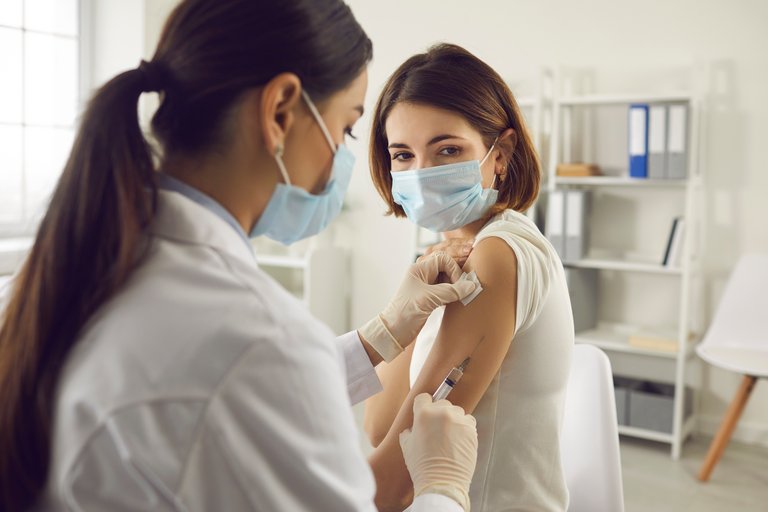
Thanks to mass vaccination, we have now entered another phase of the pandemic. What do you think are the key areas of focus at the moment in containing the corona crisis?
“Ventilation has long been a neglected issue, while as 2020 progressed it already became clear that the coronavirus also spreads through the air. By the autumn of 2020, countries like Belgium and Germany were already taking their ventilation measures, and the WHO was incorporating it into their advice. Together with other researchers, I sent a pressing letter to the government this summer to draw their attention to the important issue of ventilation.
“As a result, ventilation has now been added to the basic measures such as keeping your distance and washing your hands. But as far as we are concerned, this still does not go far enough. We advocate a task force on ventilation, which advises on how to prevent contamination through the air. In the autumn, everyone moves back indoors and the risks of spreading the virus increase. I am not reassured about an autumn without measures, because although vaccination will make the pandemic more manageable, it will not stop it.
“A second point of attention, as far as I am concerned, is the primary care provided by general practitioners. The present policy is that anyone who gets corona should actually first try to recover at home. Only when there is a serious case of pneumonia does someone go to hospital. The GP hardly plays a role. The PRINCIPLE study by Oxford University shows that asthma puffs can significantly reduce the severity of the illness of corona patients with breathing difficulties. This can potentially prevent hospital admissions and could therefore be an additional measure to reduce the pressure on health care.”
Previous news releases on corona-related research at CWI:
2021
- Vaccination strategy: https://www.cwi.nl/news/2021/first-prize-for-logistic-innovation-covid-19-vaccination-strategy
- Vaccination strategy: https://www.cwi.nl/nieuws/2021/wiskundestudenten-leveren-bijdrage-aan-coronavaccinatie-planning
- Uncertainties in COVID19 pandemic simulations: https://www.cwi.nl/news/2021/researchers-find-substantial-uncertainties-in-covid-19-pandemic-simulations
Uncertainty quantification and sensitivity analysis of COVID-19 exit strategies: https://journals.plos.org/ploscompbiol/article/authors?id=10.1371/journal.pcbi.1009355
- Suicide prevention: https://www.cwi.nl/news/2021/cwi-researchers-analyze-suicide-prevention-help-calls-during-pandemic
- COVID-19 vaccination process slides: https://www.cwi.nl/nieuws/2021/informsslides.pdf/view
2020
- Simulations for COVID19-predictions: https://www.cwi.nl/news/2020/multiple-simulations-best-for-covid-19-predictions
- New statistical method (in Dutch only): https://www.cwi.nl/news/blogs/nieuwe-statistiek-voegt-wereldwijd-corona-onderzoek-samen
- Interview with Bert Zwart (in Dutch only): https://www.cwi.nl/news/blogs/interview-bert-zwart-voor-de-correspondent-hoe-onze-obsessie-met-efficientie-ons-kwetsbaar-maakt
- Diagnosing COVID-19: https://www.cwi.nl/news/2020/can-ct-scans-be-used-to-quickly-and-accurately-diagnose-covid-19
Header image: Shutterstock.
